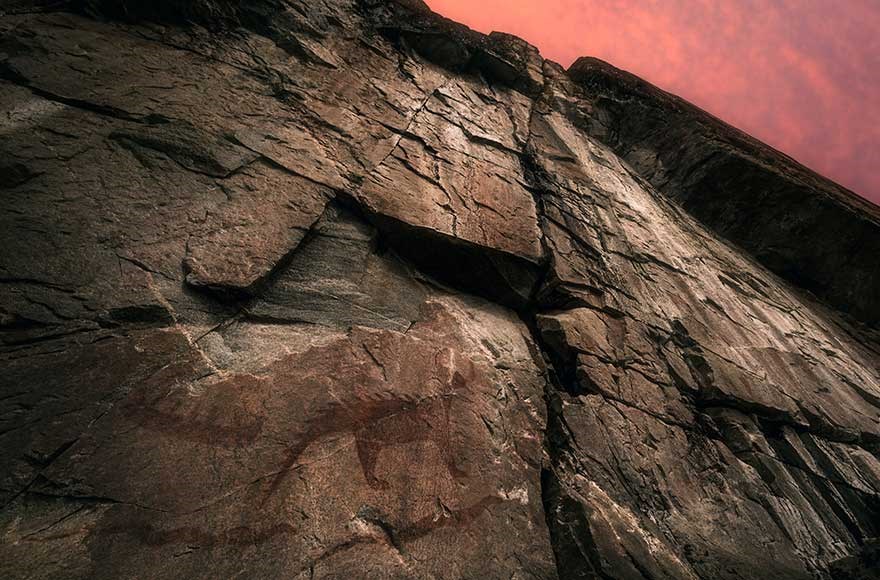Agawa Rock, is one of the most famous pictograph sites in Canada, found within Lake Superior Provincial Park. The area is also one of the most visited indigenous archaeological sites in Canada.
The majority of paintings from the Agawa site are said to date from the 17th and 18th centuries. Pictographs are survived messages from the past. This is a sacred site where generations of Ojibwe have come to record dreams, visions and events.
Agawa Rock is a sacred site. Please respect and preserve the pictographs. Do not touch the paintings. They have proven to be truly resilient, withstanding the harshest of elements given their location.
Nevertheless, the paintings continue to fade away over time. Sun, wind, waves and ice are all-natural causes to progressive erosion of the cliff face. Lichen or mineral deposition covers the figures in some places. We will never actually know how many pictographs have already faded from Agawa Rock.
The images visible today, include canoes and familiar animals such as moose, deer, bear and caribou. The most recognizable painting consisting of a spined-horned animal is said to be “Misshepezhieu”, or the Great Lynx, the spirit of the water. Misshepezhieu could work for or against humans — he could calm the waters, or he could bring wind and storms over Superior by thrashing his tail.
Agawa Bay is located approximately 135 km north of Sault Ste. Marie along highway 17 in Lake Superior Provincial Park. There is a sign at the highway directing visitors to Agawa Rock.
After a long, narrow, winding road you will reach the parking area. (Note: There are parking fees.) The trail to the site of the Pictographs is short, rugged and slippery more often than not. Ensure you dress accordingly (hiking shoes are recommended) and don’t forget your camera!
- Greg Sacco
